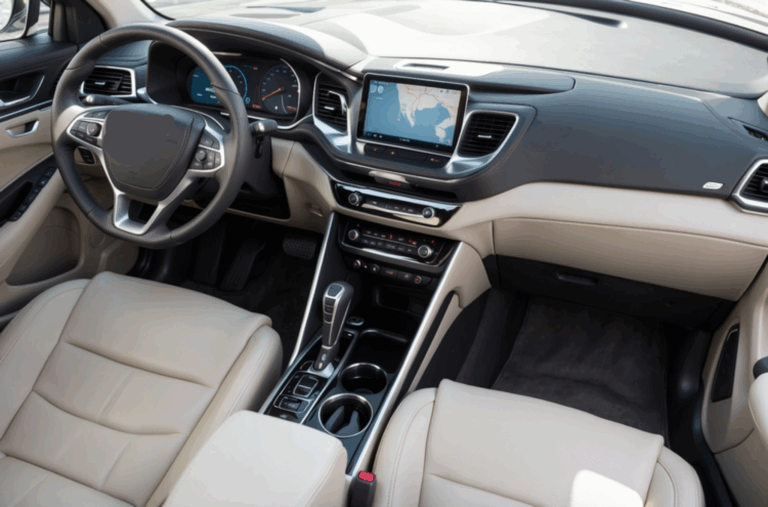Car Life Expectancy By Brand: Driving Towards a Durable Future
Car Life Expectancy By Brand: Driving Towards a Durable Future cars.truckstrend.com
In the journey of car ownership, few questions resonate as deeply as "How long will my car last?" It’s a query steeped in financial foresight, environmental consciousness, and the simple desire for reliable transportation. Car life expectancy, often measured in miles driven or years on the road, is a crucial metric that influences purchasing decisions, maintenance strategies, and ultimately, the total cost of ownership. While factors like individual driving habits and diligent maintenance play a monumental role, the brand of your vehicle is undeniably a significant predictor of its inherent durability and potential for a long, healthy life.
This comprehensive guide delves into the intricate world of car life expectancy by brand, exploring not just which brands tend to last longer, but why they do, and what you can do to ensure your vehicle defies the odds and serves you for years to come.
Car Life Expectancy By Brand: Driving Towards a Durable Future
The Quest for Longevity: Understanding Car Life Expectancy
Car life expectancy refers to the average mileage or lifespan a vehicle can reasonably be expected to achieve before major mechanical failures become prohibitively expensive, or its overall reliability significantly diminishes. For decades, the benchmark for a "long-lasting" car was 100,000 miles. Today, with advancements in engineering, materials, and manufacturing, that figure has comfortably extended, with many vehicles routinely surpassing 200,000 miles and a growing number reaching 300,000 miles or more.
Understanding this metric is vital for several reasons:
- Financial Planning: A longer-lasting car means spreading your initial investment over more years, reducing depreciation costs, and potentially delaying the need for a new car purchase.
- Environmental Impact: Keeping a car on the road longer reduces demand for new vehicle production, minimizing the carbon footprint associated with manufacturing and disposal.
- Reliability and Convenience: A durable car provides peace of mind, fewer unexpected breakdowns, and consistent performance, making your daily commute or long-distance travels worry-free.

While the brand provides a foundational outlook, it’s essential to recognize that "life expectancy" is an average. Exceptional care can push any car beyond its typical lifespan, just as neglect can shorten even the most robust vehicle’s journey.
Beyond the Badge: Factors Influencing a Car’s Lifespan
While some brands have a reputation for enduring quality, a car’s ultimate lifespan is a complex interplay of several factors. Understanding these elements is crucial for any owner aiming to maximize their vehicle’s longevity.
-
Owner Maintenance and Driving Habits: This is arguably the most significant determinant.
- Regular Servicing: Adhering to the manufacturer’s recommended maintenance schedule (oil changes, fluid checks, filter replacements, tire rotations, belt inspections) is paramount. Preventative maintenance catches small issues before they become catastrophic.
- Prompt Repairs: Addressing warning lights, strange noises, or performance issues immediately can prevent minor problems from escalating into major system failures.
- Gentle Driving: Aggressive driving – rapid acceleration, hard braking, high-speed cornering – puts immense stress on the engine, transmission, brakes, and suspension, accelerating wear and tear. Smooth, defensive driving conserves components.
- Load and Towing: Consistently carrying heavy loads or towing above recommended capacities can overwork the drivetrain and suspension, shortening their lifespan.
-
Environmental Conditions:
- Climate: Extreme heat can degrade fluids and plastics, while extreme cold can strain batteries and engines. Salty roads (from winter de-icing or coastal living) are a notorious cause of rust, which can compromise structural integrity and corrode essential components.
- Road Conditions: Driving frequently on rough, unpaved, or pothole-ridden roads puts undue stress on the suspension, tires, and steering components.
-
Vehicle Design and Components:
- Quality of Materials: Higher-quality metals, plastics, and rubber components used in manufacturing inherently last longer.
- Engineering Robustness: Some vehicles are simply designed with more durable components, larger cooling systems, or stronger frames intended for heavier use or longer lifespans.
- Complexity: Vehicles with overly complex electronic systems or highly stressed performance engines can be more prone to expensive failures, though this isn’t always the case. Simpler, naturally aspirated engines often outlast highly turbocharged or supercharged counterparts due to fewer moving parts and less stress.
-
Usage Patterns:
- Highway vs. City Driving: Highway miles are generally "easier" on a car than city miles, which involve frequent stopping, starting, and idling. The wear and tear on brakes, transmission, and engine are significantly higher in stop-and-go traffic.
- Short Trips: Frequent short trips (less than 10-15 minutes) don’t allow the engine to reach optimal operating temperature, leading to moisture buildup in the oil and increased engine wear.
Brand Reliability: Leaders in Longevity
While proper care is universal, certain brands have consistently demonstrated a superior propensity for longevity, often attributed to their engineering philosophy, quality control, and commitment to reliability over cutting-edge complexity.
- Toyota and Lexus: Often cited as the gold standard for durability. Toyota’s reputation for building reliable, long-lasting vehicles extends to its luxury division, Lexus. Their vehicles are known for robust powertrains, simple yet effective designs, and readily available, affordable parts. Many Toyota/Lexus models routinely exceed 250,000 miles with proper maintenance.
- Honda and Acura: Similar to Toyota, Honda has a strong track record for reliable engines and transmissions. Acura, their luxury marque, also benefits from this reputation. Their vehicles are known for a good balance of performance and long-term dependability.
- Subaru: While sometimes having specific quirks (like head gasket issues on older models), modern Subarus are lauded for their standard all-wheel drive systems and overall robust build quality, allowing them to withstand various climates and road conditions. Owners often report high mileage.
- Mazda: In recent years, Mazda has quietly built a reputation for reliability and quality, often competing with Toyota and Honda. Their Skyactiv engines are known for efficiency and durability.
- Hyundai and Kia: Once viewed as budget brands, Hyundai and Kia have made incredible strides in quality and reliability over the last two decades. Their long warranties reflect their confidence in their products, and many models are now seen regularly passing 200,000 miles.
- Ford and Chevrolet (Select Models): While not as universally consistent as the Japanese brands, certain models from American manufacturers, particularly their trucks (F-150, Silverado) and larger SUVs (Tahoe, Expedition), are renowned for their ruggedness and ability to accumulate high mileage, especially with diligent maintenance. Their V8 engines are often built for heavy-duty use.
- Volvo: Known for safety, Volvo also builds vehicles designed to withstand harsh conditions and last a long time, particularly their older models. Modern Volvos maintain a good reputation for durability, though parts and labor can be more expensive.
It’s important to note that even within these top brands, individual models may vary. Furthermore, luxury brands like Mercedes-Benz, BMW, and Audi, while engineered to high standards, often come with more complex systems and higher repair costs, making their "economic" life expectancy potentially shorter for average owners, despite their inherent mechanical capability to last for many miles.
The Art of Preservation: Maximizing Your Car’s Lifespan
Regardless of the brand, every car owner holds the power to significantly extend their vehicle’s life. Here’s a practical guide to maximizing your car’s longevity:
- Strictly Follow the Manufacturer’s Maintenance Schedule: This is your bible. It outlines when to change oil, rotate tires, replace filters (air, fuel, cabin), check and replace fluids (transmission, brake, power steering, coolant), inspect belts, hoses, and spark plugs, and perform major services like timing belt replacement. Don’t just do oil changes; comprehensive maintenance is key.
- Use Quality Fluids and Parts: Don’t skimp on cheap oil, off-brand filters, or generic replacement parts. Quality components are designed to meet manufacturer specifications and perform better, lasting longer and protecting your vehicle’s systems.
- Address Warning Lights Promptly: A "Check Engine" light, low tire pressure warning, or any other dashboard indicator is your car trying to tell you something. Don’t ignore it. A small issue caught early is often a cheap fix; left unaddressed, it can snowball into a costly repair.
- Drive Smoothly and Defensively: Avoid jackrabbit starts, sudden braking, and aggressive cornering. Accelerate gently, anticipate stops, and maintain a safe following distance. This reduces wear and tear on your engine, transmission, brakes, tires, and suspension.
- Keep Your Car Clean (Inside and Out): Regular washing, especially the undercarriage if you live in an area with road salt, prevents rust. Interior cleaning prevents buildup that can damage upholstery and plastics. Waxing protects paint from UV damage.
- Regularly Check Tire Pressure: Properly inflated tires wear evenly, improve fuel efficiency, and contribute to safer handling.
- Listen to Your Car: Pay attention to new noises, vibrations, or smells. They are often early indicators of a problem.
- Consider a Trusted Mechanic: Building a relationship with a reputable mechanic who knows your car can lead to better diagnostic insights and preventative advice.
The Financial & Practical Equation: When to Say Goodbye?
Even the most well-maintained car eventually reaches a point of diminishing returns. Deciding when to replace a vehicle involves a balance of financial sense, reliability, and safety.
- The 50% Rule: A common guideline suggests that if a repair bill exceeds 50% of your car’s current market value, it might be time to consider replacement. However, this rule needs context; a $3,000 repair on a $5,000 car might seem high, but if a new car costs $30,000 and the repair grants you another 3-5 years of reliable service, it’s often the more economical choice.
- Frequency of Repairs: If your car is constantly in the shop, even for minor issues, the cumulative cost and inconvenience can outweigh the benefits of keeping it.
- Safety Concerns: If the vehicle has structural rust, recurring brake issues, or failing safety features that are too costly to fix, it’s time to prioritize safety over sentiment.
- Fuel Efficiency and Emissions: Older vehicles are often less fuel-efficient and produce more emissions. If these factors are important to you, an upgrade might be warranted.
- Emotional vs. Logical: Sometimes, the decision comes down to a feeling. If you no longer trust your car for long trips, or if it causes you constant stress, the emotional toll might justify a change, even if it’s still mechanically sound.
Average Car Life Expectancy by Brand (Estimated)
The following table provides estimated average mileage ranges based on common perceptions of brand reliability and data from various automotive studies. Actual mileage will vary greatly depending on individual maintenance and driving habits.
| Brand | Estimated Average Mileage Range (Miles) | Key Notes |
|---|---|---|
| Toyota | 250,000 – 300,000+ | Renowned for exceptional reliability, low maintenance costs, and high resale value. Many models easily surpass 300k miles. |
| Lexus | 250,000 – 300,000+ | Toyota’s luxury arm; shares the same robust engineering and quality. Known for smooth rides and enduring luxury. |
| Honda | 200,000 – 280,000+ | Excellent reliability, especially their engines and transmissions. Good balance of performance and longevity. |
| Acura | 200,000 – 280,000+ | Honda’s luxury division; offers similar reliability with a sportier feel. |
| Subaru | 200,000 – 250,000+ | Known for durable AWD systems and boxer engines (though some older models had head gasket issues). Good for diverse climates and lifestyles. |
| Mazda | 200,000 – 250,000+ | Increasingly recognized for strong reliability and quality build, particularly with Skyactiv technology. |
| Hyundai | 180,000 – 230,000+ | Significant improvements in reliability and quality over the past two decades. Long warranties reflect confidence. |
| Kia | 180,000 – 230,000+ | Sister company to Hyundai, sharing many platforms and similar reliability improvements. |
| Ford | 150,000 – 200,000+ (Trucks/SUVs often higher) | Varies by model. Their trucks (F-Series) and larger SUVs are often built for heavy duty and can exceed 250k miles. Sedans and smaller SUVs can be more variable. |
| Chevrolet | 150,000 – 200,000+ (Trucks/SUVs often higher) | Similar to Ford; strong performance in trucks (Silverado) and large SUVs (Tahoe, Suburban) due to robust V8 engines and frames. Passenger cars are generally reliable but might not reach the same extreme mileages. |
| Nissan | 150,000 – 200,000+ | Historically reliable, though some models with CVT transmissions have seen varied longevity. Newer models are improving. |
| Volvo | 180,000 – 220,000+ | Known for safety and solid construction. Can last long, but European luxury parts and labor costs can be higher than Asian counterparts. |
| BMW / Mercedes-Benz / Audi | 150,000 – 200,000+ (Mechanically capable of more, but high repair costs) | Engineered for high performance and luxury. Mechanically capable of high mileage, but maintenance and repair costs, especially for complex electronic systems, can become prohibitively expensive for average owners, making their "economic" lifespan shorter. Requires strict adherence to specialized maintenance. |
Frequently Asked Questions (FAQ)
Q1: Do luxury cars last longer than economy cars?
A1: Mechanically, luxury cars are often built with high-quality components and robust engineering, making them capable of high mileage. However, their complex electronic systems and specialized parts often lead to significantly higher maintenance and repair costs. This means their "economic" life expectancy (when repairs become too expensive relative to value) can be shorter for the average owner compared to a reliable economy car.
Q2: Is it true that Japanese cars always last longer?
A2: Japanese brands like Toyota, Honda, and Lexus have certainly earned a strong reputation for exceptional reliability and longevity, often leading the pack. However, other brands (e.g., Mazda, and increasingly Hyundai/Kia) are also producing very durable vehicles. Ultimately, consistent maintenance is more critical than country of origin alone.
Q3: How much does regular maintenance extend a car’s life?
A3: Regular, preventative maintenance can extend a car’s life by tens of thousands, if not hundreds of thousands, of miles. It prevents small issues from becoming major failures, preserves component integrity, and ensures optimal performance, directly translating to a longer, healthier vehicle lifespan.
Q4: At what mileage should I consider replacing my car?
A4: There’s no magic number. Many cars comfortably reach 150,000-200,000 miles. The decision to replace often comes down to the frequency and cost of repairs, the car’s reliability for your needs, and your personal financial situation. If repair costs consistently exceed a significant percentage of the car’s value, or if you’re constantly worried about breakdowns, it might be time.
Q5: Does driving aggressively really shorten a car’s life?
A5: Absolutely. Aggressive driving (hard acceleration, braking, and turning) puts excessive stress on the engine, transmission, brakes, tires, and suspension components. This accelerates wear and tear, leading to premature failure of parts and a shortened overall lifespan for your vehicle.
Conclusion
The lifespan of your car is a testament to both its inherent design and the care it receives. While certain brands have undeniably built a reputation for enduring quality, the ultimate longevity of any vehicle rests firmly in the hands of its owner. By choosing a reputable brand known for durability, committing to a diligent maintenance schedule, practicing smooth driving habits, and addressing issues promptly, you can significantly extend your car’s life, ensuring it remains a reliable, cost-effective, and environmentally friendlier mode of transport for many years and many miles to come. Invest in your car’s well-being, and it will return the favor in spades.




